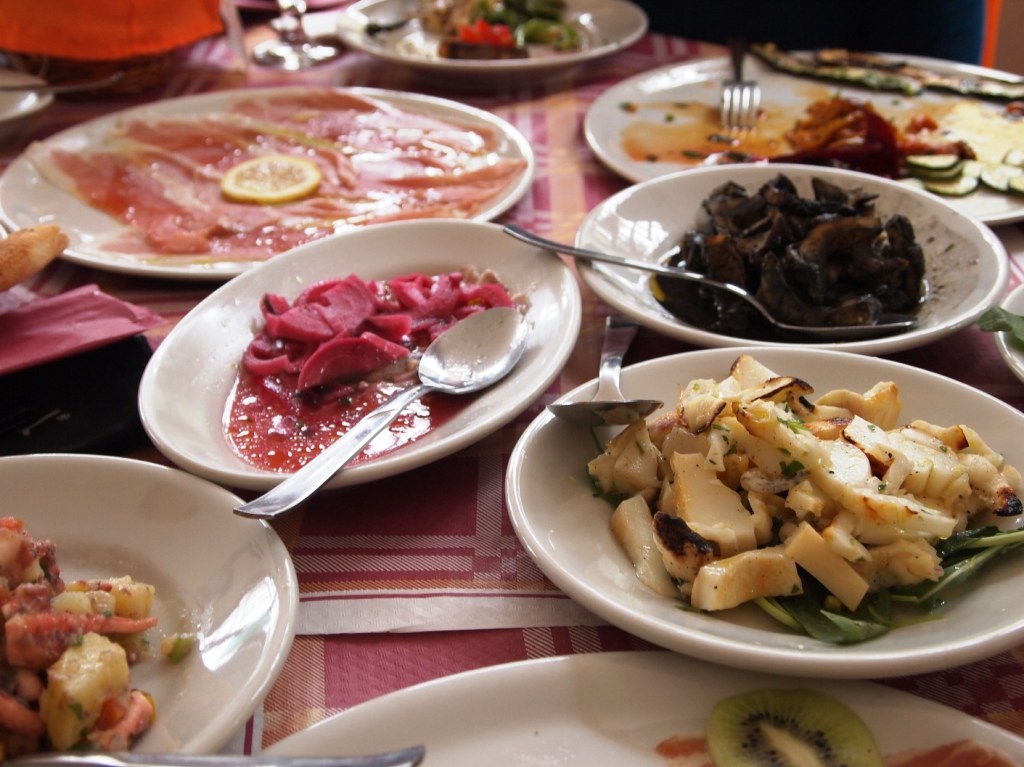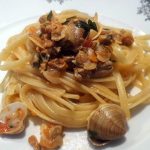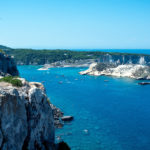
After a trip in Apulia it is obvious that I could recommend dishes such as orecchiette with turnip tops, which, however, certainly already everyone knows; I want instead to talk about some of the many products that the Gargano offers and of which maybe someone, as for me until recently, had never heard of.
The first to be named can only be my great discovery: the Fave of Carpino, among other things also Slow Food presidium. For me they were a novelty, I had never tasted them and it was love at first forkful: they are often served as a cream, perhaps accompanied with hot croutons or used as a sauce to dress pasta; we also tried it together with spaghetti and clams. This legume is simply found in the markets, or maybe in the street sold in handfuls in the back of a cart, there are those who eat it so fresh, freshly shelled from the pod.
Another Slow Food presidium is also the Podolico Caciocavallo. A cheese that has become so precious because it is produced by a particular breed of cows that is now grown only in a few places in southern Italy and produces a reduced quantity of milk, only in certain months of the year. For these reasons also the production of caciocavallo is not directed to trade outside the Gargano: consumption is directly on the territory, perhaps to accompany a glass of wine, grated on pasta or even on a pizza made to art.
The Gargano tables are also rich in fish and molluscs, offered in many variations from appetizers to the latter, often accompanied by the particular mussels and clams of Varano Lake. In all the courses usually vegetables are found, protagonists of the local cuisine thanks to the mild climate and the varied territory that means that you can have fresh tomatoes, lampascioni, wild herbs, aubergines, mushrooms and much more.
Among the most typical dishes that I tasted while staying in the Gargano I can certainly recommend the simple and poor pancotto, old bread seasoned with oil and accompanied by wild vegetables and potatoes. The Pugliese bread, by now famous, in these areas is found in the variant of Monte Sant’Angelo, lower, round and with a large size of at least 5/6 kg.
Obviously another essential ingredient used in many ways is the orange of the Gargano: both as an ingredient for desserts, from semifreddos to cakes, and also in savory dishes such as marinating fish or to flavor various types of meat during cooking.
Then there are two desserts that I had never even heard of and that I could taste: the sweet tarallo, sometimes even glazed, to be eaten at the end of a meal accompanied by a good local wine and the filled ostie of Monte Sant’Angelo, two hosts prepared by hand with caramelized almonds in the center.
Of course we can not but speak of the olive trees with which we produce both extra-virgin olive oil DOP, that olive oil in inevitable on the local tables in accompanying many dishes. With the leaves of these plants, however, combined with lemon juice, we also get a special digestive liqueur with a bitter aftertaste, the “lemolivo”: a sort of concentrate that expresses all the richness of the Gargano.
Among all, in particular, there are three dishes that this time I could not taste, of which I’ve heard so much and I’ll definitely try: the pettole, fried pizza dough that can be topped with tomato and parmesan or stuffed with caciocavallo; the paposcia, a particular focaccia cooked with wood and stuffed and the calzone of Ischitella, also a focaccia, usually prepared for Easter, with onions, anchovies and raisins.
di Chiara Regazzini
















